- Home
- Walter Scott
Guy Mannering or The Astrologer Page 3
Guy Mannering or The Astrologer Read online
Page 3
The 'Black Prince' used to discharge her cargo at Luce, Balcarry, and elsewhere on the coast; but her owner's favourite landing-places were at the entrance of the Dee and the Cree, near the old Castle of Rueberry, about six miles below Kirkcudbright. There is a cave of large dimensions in the vicinity of Rueberry, which, from its being frequently used by Yawkins and his supposed connexion with the smugglers on the shore, is now called Dirk Hatteraick's Cave. Strangers who visit this place, the scenery of which is highly romantic, are also shown, under the name of the Gauger's Loup, a tremendous precipice, being the same, it is asserted, from which Kennedy was precipitated.
Meg Merrilies is in Galloway considered as having had her origin in the traditions concerning the celebrated Flora Marshal, one of the royal consorts of Willie Marshal, more commonly called the Caird of Barullion, King of the Gipsies of the Western Lowlands. That potentate was himself deserving of notice from the following peculiarities:―He was born in the parish of Kirkmichael about the year 1671; and, as he died at Kirkcudbright 23d November 1792, he must then have been in the one hundred and twentieth year of his age. It cannot be said that this unusually long lease of existence was noted by any peculiar excellence of conduct or habits of life. Willie had been pressed or enlisted in the army seven times, and had deserted as often; besides three times running away from the naval service. He had been seventeen times lawfully married; and, besides, such a reasonably large share of matrimonial comforts, was, after his hundredth year, the avowed father of four children by less legitimate affections. He subsisted in his extreme old age by a pension from the present Earl of Selkirk's grandfather. Will Marshal is buried in Kirkcudbright church, where his monument is still shown, decorated with a scutcheon suitably blazoned with two tups' horns and two cutty spoons.
In his youth he occasionally took an evening walk on the highway, with the purpose of assisting travellers by relieving them of the weight of their purses. On one occasion the Caird of Barullion robbed the Laird of Bargally at a place between Carsphairn and Dalmellington. His purpose was not achieved without a severe struggle, in which the gipsy lost his bonnet, and was obliged to escape, leaving it on the road. A respectable farmer happened to be the next passenger, and, seeing the bonnet, alighted, took it up, and rather imprudently put it on his own head. At this instant Bargally came up with some assistants, and, recognising the bonnet, charged the farmer of Bantoberick with having robbed him, and took him into custody. There being some likeness between the parties, Bargally persisted in his charge, and, though the respectability of the farmer's character was proved or admitted, his trial before the Circuit Court came on accordingly. The fatal bonnet lay on the table of the court. Bargally swore that it was the identical article worn by the man who robbed him; and he and others likewise deponed that they had found the accused on the spot where the crime was committed, with the bonnet on his head. The case looked gloomily for the prisoner, and the opinion of the judge seemed unfavourable. But there was a person in court who knew well both who did and who did not commit the crime. This was the Caird of Barullion, who, thrusting himself up to the bar near the place where Bargally was standing, suddenly seized on the bonnet, put it on his head, and, looking the Laird full in the face, asked him, with a voice which attracted the attention of the court and crowded audience―'Look at me, sir, and tell me, by the oath you have sworn―Am not _I_ the man who robbed you between Carsphairn and Dalmellington?' Bargally replied, in great astonishment, 'By Heaven! you are the very man.' 'You see what sort of memory this gentleman has,' said the volunteer pleader; 'he swears to the bonnet whatever features are under it. If you yourself, my Lord, will put it on your head, he will be willing to swear that your Lordship was the party who robbed him between Carsphairn and Dalmellington.' The tenant of Bantoberick was unanimously acquitted; and thus Willie Marshal ingeniously contrived to save an innocent man from danger, without incurring any himself, since Bargally's evidence must have seemed to every one too fluctuating to be relied upon.
While the King of the Gipsies was thus laudably occupied, his royal consort, Flora, contrived, it is said, to steal the hood from the judge's gown; for which offence, combined with her presumptive guilt as a gipsy, she was banished to New England, whence she never returned.
Now, I cannot grant that the idea of Meg Merrilies was, in the first concoction of the character, derived from Flora Marshal, seeing I have already said she was identified with Jean Gordon, and as I have not the Laird of Bargally's apology for charging the same fact on two several individuals. Yet I am quite content that Meg should be considered as a representative of her sect and class in general, Flora as well as others.
The other instances in which my Gallovidian readers have obliged me by assigning to
Airy nothing
A local habitation and a name,
shall also be sanctioned so far as the Author may be entitled to do so. I think the facetious Joe Miller records a case pretty much in point; where the keeper of a museum, while showing, as he said, the very sword with which Balaam was about to kill his ass, was interrupted by one of the visitors, who reminded him that Balaam was not possessed of a sword, but only wished for one. 'True, sir,' replied the ready-witted cicerone; 'but this is the very sword he wished for.' The Author, in application of this story, has only to add that, though ignorant of the coincidence between the fictions of the tale and some real circumstances, he is contented to believe he must unconsciously have thought or dreamed of the last while engaged in the composition of Guy Mannering.
EDITOR'S INTRODUCTION
TO
GUY MANNERING.
The second essay in fiction of an author who has triumphed in his first romance is a doubtful and perilous adventure. The writer is apt to become self-conscious, to remember the advice of his critics,―a fatal error,―and to tremble before the shadow of his own success. He knows that he will have many enemies, that hundreds of people will be ready to find fault and to vow that he is "written out." Scott was not unacquainted with these apprehensions. After publishing "Marmion" he wrote thus to Lady Abercorn:―
"No one acquires a certain degree of popularity without exciting an equal degree of malevolence among those who, either from rivalship or from the mere wish to pull down what others have set up, are always ready to catch the first occasion to lower the favoured individual to what they call his 'real standard.' Of this I have enough of experience, and my political interferences, however useless to my friends, have not failed to make me more than the usual number of enemies. I am therefore bound, in justice to myself and to those whose good opinion has hitherto protected me, not to peril myself too frequently. The naturalists tell us that if you destroy the web which the spider has just made, the insect must spend many days in inactivity till he has assembled within his person the materials necessary to weave another. Now, after writing a work of imagination one feels in nearly the same exhausted state as the spider. I believe no man now alive writes more rapidly than I do (no great recommendation); but I never think of making verses till I have a sufficient stock of poetical ideas to supply them,―I would as soon join the Israelites in Egypt in their heavy task of making bricks without clay. Besides, I know, as a small farmer, that good husbandry consists in not taking the same crop too frequently from the same soil; and as turnips come after wheat, according to the best rules of agriculture, I take it that an edition of Swift will do well after such a scourging crop as 'Marmiou.'"
[March 13, 1808. Copied from the Collection of Lady Napier and Ettrick.]
These fears of the brave, then, were not unfamiliar to Scott; but he audaciously disregarded all of them in the composition of "Guy Mannering." He had just spun his web, like the spider of his simile, he had just taken off his intellectual fields the "scourging crop" of "The Lord of the Isles," he had just received the discouraging news of its comparative failure, when he "buckled to," achieved "Guy Mannering" in six weeks, and published it. Moliere tells us that he wrote "Les Facheux" in a fortnight; and a French
critic adds that it reads indeed as if it had been written in, a fortnight. Perhaps a self-confident censor might venture a similar opinion about "Guy Mannering." It assuredly shows traces of haste; the plot wanders at its own will; and we may believe that the Author often―did not see his own way out of the wood. But there is little harm in that. "If I do not know what is coming next," a modern novelist has remarked, "how can the public know?" Curiosity, at least, is likely to be excited by this happy-go-lucky manner of Scott's. "The worst of it is;" as he wrote to Lady Abercorn about his poems (June 9,1808), "that I am not very good or patient in slow and careful composition; and sometimes I remind myself of the drunken man, who could run long after he could not walk." Scott could certainly run very well, though averse to a plodding motion.
[He was probably thinking of a famous Edinburgh character, "Singing Jamie Balfour." Jamie was found very drunk and adhering to the pavement one night. He could not raise himself; but when helped to his feet, ran his preserver a race to the tavern, and won!]
The account of the year's work which preceded "Guy Mannering" is given by Lockhart, and is astounding. In 1814 Scott had written, Lockhart believes, the greater part of the "Life of Swift," most of "Waverley" and the "Lord of the Isles;" he had furnished essays to the "Encyclopaedia," and had edited "The Memorie of the Somervilles." The spider might well seem spun out, the tilth exhausted. But Scott had a fertility, a spontaneity, of fancy equalled only, if equalled at all, by Alexandre Dumas.
On November 7 of this laborious year, 1814, Scott was writing to Mr. Joseph Train, thanking him for a parcel of legendary lore, including the Galloway tale of the wandering astrologer and a budget of gypsy traditions. Falling in the rich soil of Scott's imagination, the tale of the astrologer yielded a name and an opening to "Guy Mannering," while the gypsy lore blossomed into the legend of Meg Merrilies. The seed of the novel was now sown. But between November 11 and December 25 Scott was writing the three last cantos of the "Lord of the Isles." Yet before the "Lord of the Isles" was published (Jan. 18, 1815), two volumes of "Guy Mannering" were in print (Letter to Morritt, Jan. 17, 1815.) The novel was issued on Feb. 14, 1815. Scott, as he says somewhere, was like the turnspit dog, into whose wheel a hot cinder is dropped to encourage his activity. Scott needed hot cinders in the shape of proof-sheets fresh from the press, and he worked most busily when the printer's devil was waiting. In this case, not only the printer's devil, but the wolf was at the door. The affairs of the Ballantynes clamoured for moneys In their necessity and his own, Scott wrote at the rate of a volume in ten days, and for some financial reason published "Guy Mannering" with Messrs. Longmans, not with Constable. Scott was at this moment facing creditors and difficulties as Napoleon faced the armies of the Allies,―present everywhere, everywhere daring and successful. True, his "Lord of the Isles" was a disappointment, as James Ballantyne informed him. "'Well, James, so be it; but you know we must not droop, for we cannot afford to give over. Since one line has failed, we must just stick to something else.' And so he dismissed me, and resumed his novel."
In these circumstances, far from inspiring, was "Guy Mannering" written and hurried through the press. The story has its own history: one can watch the various reminiscences and experiences of life that crystallized together in Scott's mind, and grouped themselves fantastically into his unpremeditated plot. Sir Walter gives, in the preface of 1829, the legend which he heard from John MacKinlay, his father's Highland servant, and on which he meant to found a tale more in Hawthorn's manner than in his own. That plan he changed in the course of printing, "leaving only just enough of astrology to annoy pedantic reviewers and foolish Puritans." Whence came the rest of the plot,―the tale of the long-lost heir, and so on? The true heir, "kept out of his own," and returning in disguise, has been a favourite character ever since Homer sang of Odysseus, and probably long before that. But it is just possible that Scott had a certain modern instance in his mind. In turning over the old manuscript diary at Branxholme Park (mentioned in a note to "Waverley"), the Editor lighted on a singular tale, which, in the diarist's opinion, might have suggested "Guy Mannering" to Sir Walter. The resemblance between the story of Vanbeest Brown and the hero of the diarist was scanty; but in a long letter of Scott's to Lady Abercorn (May 21, 1813), a the Editor finds Sir Walter telling his correspondent the very narrative recorded in the Branxholme Park diary. Singular things happen, Sir Walter says; and he goes on to describe a case just heard in the court where he is sitting as Clerk of Sessions. Briefly, the anecdote is this: A certain Mr. Carruthers of Dormont had reason to suspect his wife's fidelity. While proceedings for a divorce were pending, Mrs. Carruthers bore a daughter, of whom her husband, of course, was legally the father. But he did not believe in the relationship, and sent the infant girl to be brought up, in ignorance of her origin and in seclusion, among the Cheviot Hills. Here she somehow learned the facts of her own story. She married a Mr. Routledge, the son of a yeoman, and "compounded" her rights (but not those of her issue) for a small sung of ready money, paid by old Dormont. She bears a boy; then she and her husband died in poverty. Their son was sent by a friend to the East Indies, and was presented with a packet of papers, which he left unopened at a lawyer's. The young man made a fortune in India, returned to Scotland, and took a shooting in Dumfriesshire, near bormont, his ancestral home. He lodged at a small inn hard by, and the landlady, struck by his name, began to gossip with him about his family history. He knew nothing of the facts which the landlady disclosed, but, impressed by her story, sent for and examined his neglected packet of papers. Then he sought legal opinion, and was advised, by President Blair, that he had a claim worth presenting on the estate of Dormont. "The first decision of the cause," writes Scott, "was favourable." The true heir celebrated his legal victory by a dinner-party, and his friends saluted him as "Dormont." Next morning he was found dead. Such is the true tale. As it occupied Scott's mind in 1813, and as he wrote "Guy Mannering" in 1814-15, it is not impossible that he may have borrowed his wandering heir, who returns by pure accident to his paternal domains, and there learns his origin at a woman's lips, from the Dormont case. The resemblance of the stories, at least, was close enough to strike a shrewd observer some seventy years ago.
Another possible source of the plot―a more romantic origin, certainly―is suggested by Mr. Robert Chambers in "Illustrations of the Author of 'Waverley.'" A Maxwell of Glenormiston, "a religious and bigoted recluse," sent his only son and heir to a Jesuit College in Flanders, left his estate in his brother's management, and died. The wicked uncle alleged that the heir was also dead. The child, ignorant of his birth, grew up, ran away from the Jesuits at the age of sixteen, enlisted in the French army, fought at Fontenoy, got his colours, and, later, landed in the Moray Firth as a French officer in 1745. He went through the campaign, was in hiding in Lochaber after Drumossie, and in making for a Galloway port, was seized, and imprisoned in Dumfries. Here an old woman of his father's household recognized him by "a mark which she remembered on his body." His cause was taken up by friends; but the usurping uncle died, and Sir Robert Maxwell recovered his estates without a lawsuit. This anecdote is quoted from the "New Monthly Magazine," June, 1819. There is nothing to prove that Scott was acquainted with this adventure. Scott's own experience, as usual, supplied him with hints for his characters. The phrase of Dominie Sampson's father, "Please God, my bairn may live to wag his pow in a pulpit," was uttered in his own hearing. There was a Bluegown, or Bedesman, like Edie Ochiltree, who had a son at Edinburgh College. Scott was kind to the son, the Bluegown asked him to dinner, and at this meal the old man made the remark about the pulpit and the pow.' A similar tale is told by Scott in the Introduction to "The Antiquary" (1830). As for the good Dominie, Scott remarks that, for "certain particular reasons," he must say what he has to say about his prototype "very generally." Mr. Chambers' finds the prototype in a Mr. James Sanson, tutor in the house of Mr. Thomas Scott, Sir Walter's uncle. It seems very unlike Sir Walter to mention this excellent man almos
t by his name, and the tale about his devotion to his patron's daughter cannot, apparently, be true of Mr. James Sanson. The prototype of Pleydell, according to Sir Walter himself (Journal, June 19, 1830), was "my old friend Adam Rolland, Esq., in external circumstances, but not in frolic or fancy." Mr. Chambers, however, finds the original in Mr. Andrew Crosbie, an advocate of great talents, who frolicked to ruin, and died in 1785. Scott may have heard tales of this patron of "High Jinks," but cannot have known him much personally. Dandie Dinmont is simply the typical Border farmer. Mr. Shortreed, Scott's companion in his Liddesdale raids, thought that Willie Elliot, in Millburnholm, was the great original. Scott did not meet Mr. James Davidson in Hindlee, owner of all the Mustards and Peppers, till some years after the novel was written. "Guy Mannering," when read to him, sent Mr. Davidson to sleep. "The kind and manly character of Dandie, the gentle and delicious one of his wife," and the circumstances of their home, were suggested, Lockhart thinks, by Scott's friend, steward, and amanuensis, Mr. William Laidlaw, by Mrs. Laidlaw, and by their farm among the braes of Yarrow. In truth, the Border was peopled then by Dandies and Ailies: nor is the race even now extinct in Liddesdale and Teviotdale, in Ettrick and Yarrow. As for Mustard and Pepper, their offspring too is powerful in the land, and is the deadly foe of vermin. The curious may consult Mr. Cook's work on "The Dandie Dinmont Terrier." The Duke of Buccleugh's breed still resembles the fine example painted by Gainsborough in his portrait of the duke (of Scott's time). "Tod Gabbie," again, as Lockhart says, was studied from Tod Willie, the huntsman of the hills above Loch Skene. As for the Galloway scenery, Scott did not know it well, having only visited "the Kingdom" in 1793, when he was defending the too frolicsome Mr. McNaught, Minister of Girthon. The beautiful and lonely wilds of the Glenkens, in central Galloway, where traditions yet linger, were, unluckily, terra incognita to Scott. A Galloway story of a murder and its detection by the prints of the assassin's boots inspired the scene where Dirk Hatteraick is traced by similar means. In Colonel Mannering, by the way, the Ettrick Shepherd recognized "Walter Scott, painted by himself."

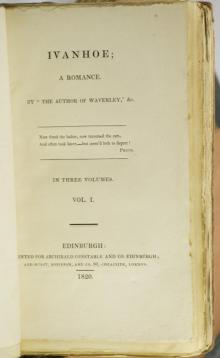 Ivanhoe: A Romance
Ivanhoe: A Romance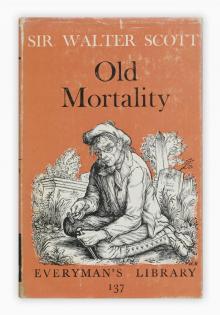 Old Mortality, Complete
Old Mortality, Complete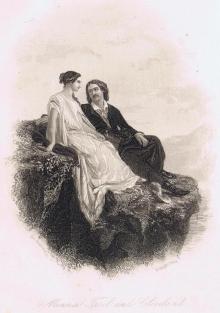 The Pirate
The Pirate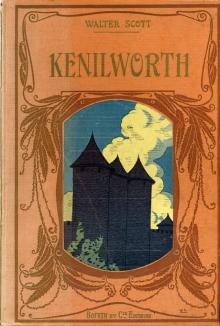 Kenilworth
Kenilworth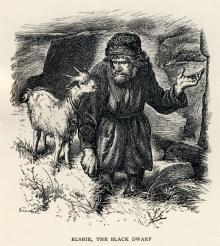 The Black Dwarf
The Black Dwarf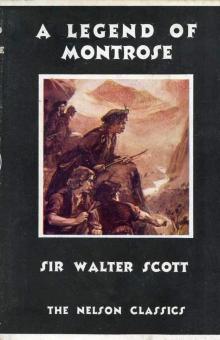 A Legend of Montrose
A Legend of Montrose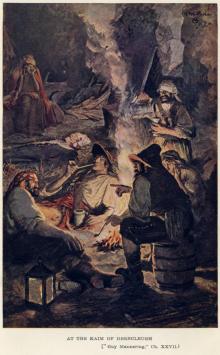 The Monastery
The Monastery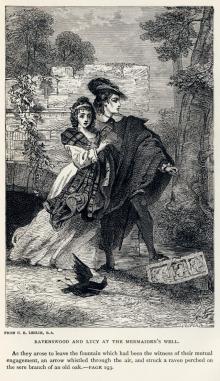 The Bride of Lammermoor
The Bride of Lammermoor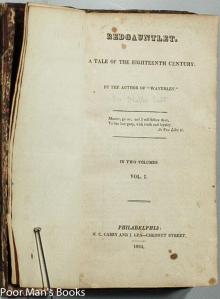 Redgauntlet: A Tale Of The Eighteenth Century
Redgauntlet: A Tale Of The Eighteenth Century St. Ronan's Well
St. Ronan's Well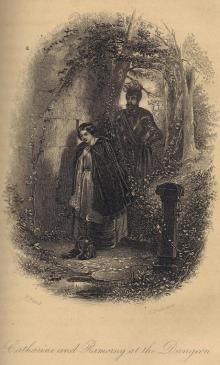 The Fair Maid of Perth; Or, St. Valentine's Day
The Fair Maid of Perth; Or, St. Valentine's Day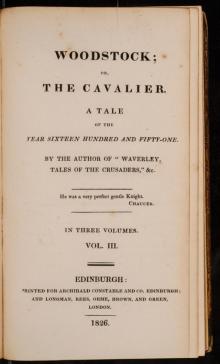 Woodstock; or, the Cavalier
Woodstock; or, the Cavalier_preview.jpg) Anne of Geierstein; Or, The Maiden of the Mist. Volume 1 (of 2)
Anne of Geierstein; Or, The Maiden of the Mist. Volume 1 (of 2)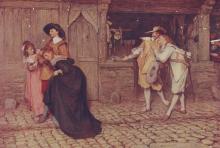 Peveril of the Peak
Peveril of the Peak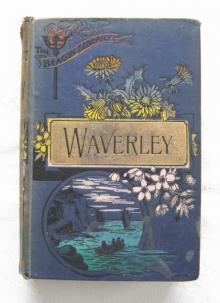 Waverley; Or, 'Tis Sixty Years Since
Waverley; Or, 'Tis Sixty Years Since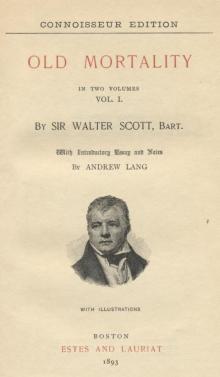 Old Mortality, Volume 1.
Old Mortality, Volume 1. Waverley Novels — Volume 12
Waverley Novels — Volume 12 The Heart of Mid-Lothian, Complete
The Heart of Mid-Lothian, Complete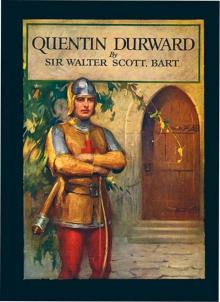 Quentin Durward
Quentin Durward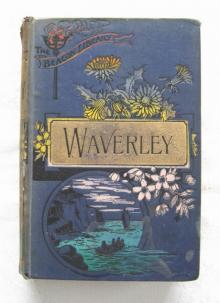 Waverley; Or 'Tis Sixty Years Since — Complete
Waverley; Or 'Tis Sixty Years Since — Complete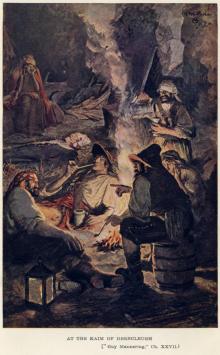 Guy Mannering; or, The Astrologer — Complete
Guy Mannering; or, The Astrologer — Complete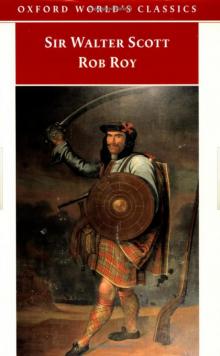 Rob Roy — Complete
Rob Roy — Complete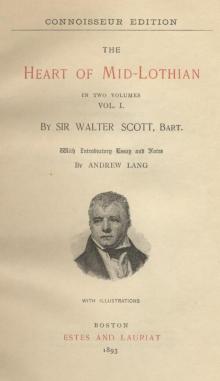 The Heart of Mid-Lothian, Volume 2
The Heart of Mid-Lothian, Volume 2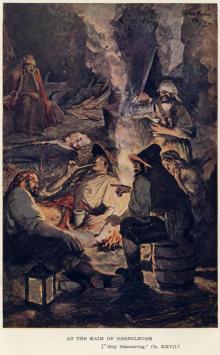 Guy Mannering, Or, the Astrologer — Complete
Guy Mannering, Or, the Astrologer — Complete_preview.jpg) Anne of Geierstein; Or, The Maiden of the Mist. Volume 2 (of 2)
Anne of Geierstein; Or, The Maiden of the Mist. Volume 2 (of 2)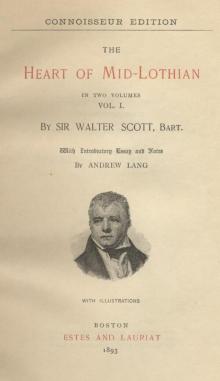 The Heart of Mid-Lothian, Volume 1
The Heart of Mid-Lothian, Volume 1 Rob Roy — Volume 01
Rob Roy — Volume 01 Waverley; Or, 'Tis Sixty Years Since — Volume 2
Waverley; Or, 'Tis Sixty Years Since — Volume 2 Waverley; Or, 'Tis Sixty Years Since — Volume 1
Waverley; Or, 'Tis Sixty Years Since — Volume 1 Guy Mannering, Or, the Astrologer — Volume 01
Guy Mannering, Or, the Astrologer — Volume 01 The Talisman toc-2
The Talisman toc-2 Rob Roy
Rob Roy Old Mortality, Volume 2.
Old Mortality, Volume 2. The Betrothed
The Betrothed Waverley
Waverley The Surgeon's Daughter
The Surgeon's Daughter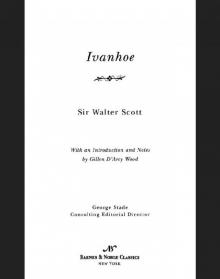 Ivanhoe (Barnes & Noble Classics Series)
Ivanhoe (Barnes & Noble Classics Series)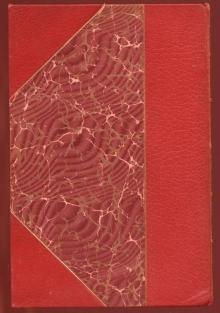 The Antiquary
The Antiquary Letters on Demonology and Witchcraft
Letters on Demonology and Witchcraft Trial of Duncan Terig
Trial of Duncan Terig Redgauntlet
Redgauntlet My Aunt Margaret's Mirror
My Aunt Margaret's Mirror Guy Mannering or The Astrologer
Guy Mannering or The Astrologer Marmion
Marmion The Tapestried Chamber, and Death of the Laird's Jock
The Tapestried Chamber, and Death of the Laird's Jock Chronicles of the Canongate
Chronicles of the Canongate The Fair Maid of Perth or St. Valentine's Day
The Fair Maid of Perth or St. Valentine's Day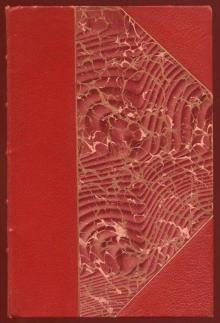 The Heart of Mid-Lothian
The Heart of Mid-Lothian Lady of the Lake
Lady of the Lake